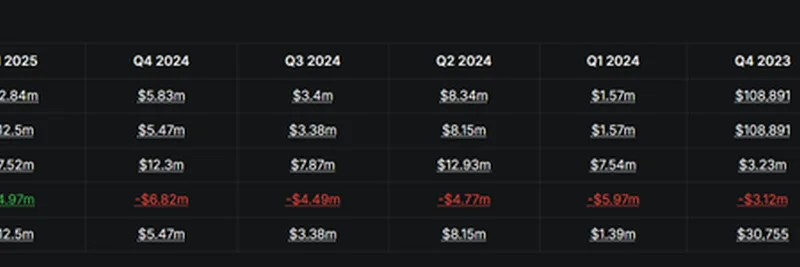In the fast-evolving world of decentralized finance (DeFi), things are starting to look a lot more like traditional finance—or TradFi, as we call it in crypto circles. A recent tweet from DeFi expert @Defi0xJeff spotlighted an income statement for Pendle Finance, pulled straight from DefiLlama, a popular analytics platform for tracking DeFi metrics. This isn't just some random data dump; it's a sign that Web3 projects are maturing, with investors eyeing real financials like revenue, incentives, and earnings potential.
Pendle Finance, for those new to it, is a DeFi protocol that lets users trade and hedge yield on assets like staking rewards or lending interest. Think of it as a marketplace for future yields—super useful in volatile crypto markets.
Breaking Down Pendle's Income Statement
The shared table shows Pendle's quarterly financials from Q4 2022 all the way to Q3 2025. It's packed with key lines: fees (revenue from protocol usage), incentives (rewards paid out to users, often in tokens), earnings (basically fees minus incentives), and token holder net income (what's left for $PENDLE holders after everything).
Looking at the numbers, Pendle started from scratch in late 2022 with zero fees and mounting incentives, leading to negative earnings. Fast forward to Q3 2025, and fees have surged to $5.74 million, outpacing incentives at $3.88 million. This flips earnings positive at $1.74 million, with token holders netting a solid $5.62 million. That's real growth—topline revenue climbing quarter over quarter, signaling stronger adoption and protocol health.
What stands out is the shift from losses to profitability. Early quarters were all about bootstrapping with incentives to attract users, a common DeFi play. But now, with fees exceeding incentives, Pendle is showing "real earnings," as Jeff puts it. This means the protocol is generating more value than it's giving away in rewards, a hallmark of sustainable business models.
The Bigger Picture: DeFi Valuations Evolving
Jeff's take hits the nail on the head: Web3 is inching toward TradFi vibes. Soon, we'll be chatting about metrics like P/E (price-to-earnings ratio, which measures a token's price relative to its earnings per token), P/S (price-to-sales, comparing market cap to revenue), and MC/TVL (market cap to total value locked, gauging if a protocol is over or undervalued based on locked assets).
In DeFi's wild west days, hype and narratives drove prices. But with tools like DefiLlama providing transparent financial statements, investors can now dig into fundamentals. Projects with strong topline growth—meaning consistent revenue increases—and earnings potential will attract the big money. Those where revenue consistently beats incentives? They'll get the most love, as they prove they're not just burning through token emissions.
This maturation is exciting for the space. It means DeFi protocols are being treated like actual businesses, complete with balance sheets and income statements. No more relying solely on tokenomics or community vibes; data-driven valuations are here.
Why This Matters for Blockchain Practitioners
If you're in blockchain, whether building, investing, or just hodling, keep an eye on these trends. Platforms like DefiLlama are democratizing access to this info, making it easier to spot winners. Pendle's story shows how focusing on real utility and earnings can pay off—literally. As Jeff says, we're entering a new era where protocols are valued on merit, not memes (though memes still have their place!).
Exciting times ahead in DeFi. What's your favorite protocol showing strong financials? Drop your thoughts below.

